- Accommodations
- Destination
- Family friendly
- Glimpse of Tours
- Meals Included
- Nepal
- Seasonal Offer
- Transportation included
Lumbini is located in the south-central Terai of Nepal; it is about 350 km south west of Kathmandu. Situated in the foothills of the Himalayas. For millions of Buddhists the world over, it evokes a kind of holy sentiment akin to the significance of Jerusalem to Christians and Mecca to Muslims. Lumbini is the place where Lord Buddha – the apostle of peace, and the Light of Asia – was born in 623 B.C. In historical terms, the region is an exquisite treasure-trove of ancient ruins and antiquities, dating back to the pre-Christian era. The site (Lumbini Grove) was described as a beautiful garden in the Buddha’s time and still retains its legendary charm and beauty. Both the Shakyas and Kolias Clans owned the garden and its tranquil environs at the time of Lord Buddha’s birth. King Suddhodana, father of Buddha was of the Shakya Dynasty belonging to the Kshatriya or Warrior Caste.
For centuries, Buddhists the world over knew that the general area of Lumbini was where the Lord was born. In the words of those famous Chinese pilgrims of antiquity, Huian Tsang and Faeihan, ‘Lumbini- where the Lord was born – is a piece of Heaven on Earth, where one could see the snowy mountains amidst a splendid garden, embedded with stupas and monasteries!’ However, the exact location remained uncertain and obscure until 1 December 1886 when a wandering German archaeologist Dr. Alois A. Fuhrer came across a stone pillar and ascertained beyond doubt it was indeed the birthplace of Lord Buddha. Since that day it has become a focal point for hundreds of thousands of pilgrims.
Lumbini is the fourth largest tourist destination in Nepal. Nearly 20,000 tourists visit the area every year (Source: Nepal Tourism Board). Recently, UNESCO has declared it a World Heritage Site. It has great potential to grow as the major tourist destination in years to come.
The significance of Lumbini
Many of the places that were of importance to the Lord Buddha during his life retain a potent significance to Buddhists of today. Unsurprisingly, nowhere has a greater significance than the site of his birth. In the words of Buddha himself: “O-Bhikshus’, after my death when people and members of a new generation come and ask you, then tell them that here the Buddha was born, here he attained the full enlightenment, here he turned the wheel of Dharma twelve times, and here finally the Buddha entered into Parinirvana”. Hundreds of years have gone by, but the architectural splendours of that era are still standing and serve as a vivid reminder of the origins of Buddhist philosophy and doctrines. As a complement to the temples and shrines, our aim is to create a living environment in which Buddha would have felt at home during his life.
Attractions
Lumbini Grove: Monks prayingThis is the sacred site of Lord Buddha’s birth, which is today a small village in Nepal, 27 Km from Sunauli on the Indo-Nepal border. The sacred site of the Buddha’s birth is at the southern end of Lumbini grove. Excavations have revealed a series of rooms and a stone slab, which is now believed to mark the exact location at which the Buddha, (or Siddhartha as he would have been known then) was born. The whole place has an air of remoteness except when the occasional busload of pilgrims from different corners of the Buddhist universe arrives.
The Rummendei pillar: Three hundred years after the Mahaparinirvana, Emperor Ashoka visited Lumbini and erected a pillar there. This pillar, though broken, still remains at the site. It is known as the Rummendei pillar after the earlier name of the place (modern name Rupandehi) in Nepal.
The Mayadevi temple: The Mayadevi temple and the tank nearby are part of the sacred complex. There are two beautiful panels in the temple, the older one in stone and the other in marble. Both panels show Mayadevi holding the Sal tree and the young prince emerging out of her right side. Just outside the temple is a tank whose water glistens in the faint sun, the gentle breeze creating endless ripples. Here Queen Mahamaya had her bath before the delivery and it was also here that Prince Siddhartha had his first purification bath.
Dharmaswami Maharaja Buddha Vihara: This Tibetan gompa belonging to the Sakyapa order, is also outside the complex. His Eminence Chogya the complex. His Eminence Chogya Trichen Rinpoche and the Raja of Mustang established it. Every morning around sixty monks who reside here conduct the Tara Puja. At the end of September, two thousand monks congregate for a 10-day Puja and on 13th December each year for the Mahakala Puja, which also lasts for 10 days.
A couple of kilometres away, a complex of monasteries is constructed on a grand scale. Monasteries in the respective national styles of Myanmar (Burma) China, Japan, Korea, Vietnam and Thailand are among those that are built. Also in the vicinity are the Lumbini Research Institute, which has an impressive collection of Buddhist literature, and a Museum. Both are open from Sunday to Saturday, 10 am to 5 pm (10 am to 4 pm in winter)
Kapilvastu: Located some 27 km west of Lumbini lies the ruins of historic town of Kapilvastu. Also, the place is believed to have been associated with different important episodes: there are ruins and mounds of old stupas and monasteries made of kiln-fired bricks and clay mortar. The remains are surrounded by a moat and the walls of the city are made of bricks. In fact, the city of Kapilvastu is constructed on such a grand scale that it is not hard to picture it as a seat of high culture.
Aroarakot: About 10 km northwest of Taulihawa there is a rectangular fortified area, which is popularly known as Arourakot. The fortified area was identified by the famous Indian archaeologist P.C. Mukharji as the natal town of Kanakmuni Buddha (one of the forms of Buddha). Remains of an ancient moat and brick fortification around the Arourakot is still clearly visible. A brick lined well is seen to the south and an elevated mound towards the northwest corner.
Gotihawa: About 5 km southwest of Taulihawa, there is a village called Gotihawa. In the village there is an Ashokan Pillar standing in a slab. The upper portion of the pillar is broken and lost and only the lower portion of the pillar, 3.5m high, is still intact. Adjoining the pillar towards its northeast there is a huge Stupa built of successive concentric rings of wedge shaped Mauryan bricks.
Kudan: About 2 km. southwest of Taulihawa, on the left side of the Shoratgarh Taulihawa road stands the village Kudan that boasts a huge structural ruin with a cluster of four mounds and a water body. The mounds were excavated in 1962.
Niglihawa: About 8 km, northwest of Taulihawa, there is another site of archaeological importance. The site has quadrangular water body surrounded by bushes, locally known as Niglisagar. On the western Bank of the tank there are two broken pieces of the Ashokan pillar, the longer one laying flat and the shorter ones stack into the ground. The pillar bears two peacocks on the top part and a Devanagari script inscription reading Om Mani Padme Hum (praise to the jewel at the heart of the lotus).
The shorter portion of the pillar which is partly buried in the ground measures 1.52m in length bears four lines of Ashokan inscription in the Brahmi script which roughly translates as: “King Piyadasi Beloved of the gods, after 14 years of his coronation enlarged for the second time the stupa of Buddha kanaka Muni, and after 20 years of his coronat ion he came himself and worshipped and he caused this stone pillar to be erected.”
Sagarhawa: About 12 km. north of Taulihawa, there is a forest area called Sagarhawa. In the midst of the forest there is a huge rectangular water pool which is popularly known as Lumbusagar, or a long pool. The ancient waterbody ruins, which were excavated and identified by Dr. Aslois A. Fuhrer in 1895 as the ‘Palace of massacre of the Shakyas’, can still be found on the west south banks of the Sagar.
Devdaha: Devdaha is the ancient capital of the Koliya Kingdom, located 54 km east of Lumbini, across the Rohini River. It is the maternal hometown of Queen Mayadevi (mother), Prajapati Gautami (step-mother), Princess Yasodhara (consort), where Prince Siddhartha spent his early childhood. After seven years of his enlightenment, Lord Buddha had visited Devdaha and had ordained the followers of Jain Sadhu Nirgandha Nathputra. There are several other sites Kumarbarti, Khayardanda, Bairimai/Kanyamai, Bhabanipur/Devidamar, Mathagadi (ancient weapons), around Devdaha.
Ramagrama: It is the brick mound on the bank of Jharahi River. It is seven meter high brick stupa consisting of relic (one of the eight astha dhatu) of Lord Buddha. The stupa was build by the King of Ramagrama, who was the eighth King to obtain the Buddha’s relics. History has noted that Emperor Asok to open it to multiply into eight four thousand stupa. However, the Dragon King of Ramagrama stupa did not permit.
Village Tour: There are half a dozen routes that take you through typical villages of the area. These walks last from an hour to 3 hours.
Natural History Tours to Lumbini: Farmlands of Lumbini has been identified as an Important Bird Area (IBA) having high biodiversity and unique ecosystems in Nepal. Bird specialties include; Sarus Crane, Lesser Adjutant, Indian Spotted Eagle, Critically Endangered 2 species of Gyps and several birds of prey, owls, etc. Mammals include Nilgai, Asiatic Golden Jackal, Jungle Cat, Grey Mongoose etc.
The Puskarini or Holy Pond: Close by the Asokan Pillar on the southern side is the holy pond, the Puskarini, believed to be the holy pond in which Maya Devi took bath just before giving birth to the Lord Buddha. It is also the site where the infant prince Siddhartha was given his first purification bath. The pond has terraced steps and is riveted by beautifully layered bricks.
The Asokan Pillar: The Asokan Pillar bears the first epigraphic evidence relating to the birthplace of Lord Buddha. It is the most noteworthy monument and an authentic historic document of birthplace of Lord Buddha in Lumbini. The inscription engraved by Emperor Ashoka is still intact and testifies the authenticity of the birthplace. The text written in Brahmi script and pali language is translated as follows:
Twenty years after his coronation, King Priyadarsi, Beloved of Gods visited this spot in person and offered worship at this place, because the Buddha, the Sage of the Sakyas, was born here. He caused to be built a stone wall around the place and also erected this stone pillar to commemorate his visit. Because the Lord Buddha was born here, he made the village of Lumbini free from taxes and subject to pay only one-eight of the produce as land revenue instead of the usual rate.
Tilaurakot: The ancient capital of Sakya, Kapilvastu, has now been identified with Tilaurakot, a site in ruins located 25 km west of Lumbini. The five periods of habitation of this walled city begin from 8th – 7h B.C. and end in 2 d century A.D. Excavations have revealed the foundations of a citadel with defence wall, gateways, monasteries and stupas.
Also visit tours for more packages.
| DEPARTURE/RETURN LOCATION | Kathmandu, Nepal | |||||
| DEPARTURE TIME | Please arrive by 6:40 AM for a prompt departure at 7:00 AM. | |||||
| RETURN TIME | Approximately 5:00 PM. | |||||
| THINGS TO BRING |
|
|||||
| INCLUDED |
|
|||||
| NOT INCLUDED |
|
Additional information
| Duration | 3 days |
|---|---|
| Physicality | 6/10 |
| Location | Lumbini, Nepal |
1st day
- Departure for Lumbini from Kathmandu
- Breakfast on the way
- Lunch at Chitwan
- Check in at hotel, Refreshment, Free time
- Dinner/Overnight
2nd day
- Wake up
- Breakfast
- Visit Mayadevi temple, different monasteries inside Lumbini
- Visit Taulihawa Palace of Siddartha Gautam
- Back to hotel, Refreshment ana Entertainment
- Dinner/Overnight
3rd day
- Wake up
- Breakfast
- Departure for Kathmandu
- Lunch at Chitwan
- Arrival at Kathmandu
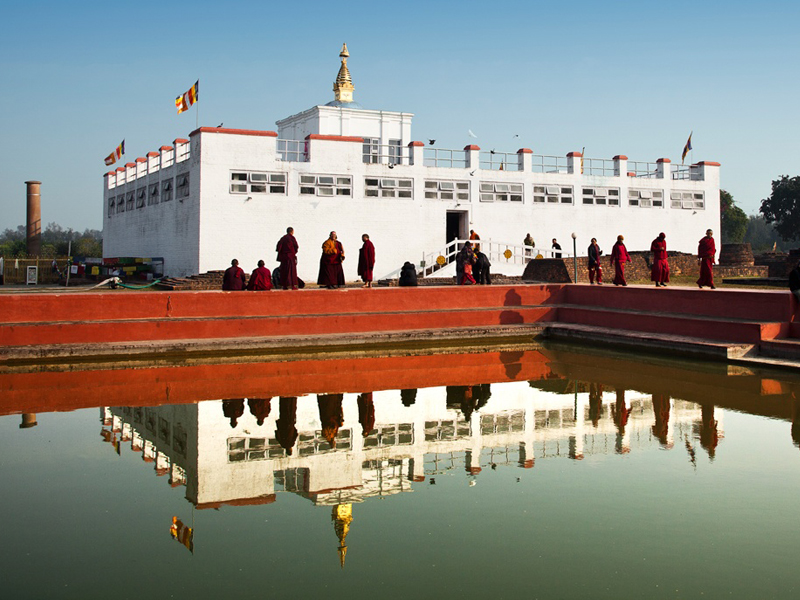
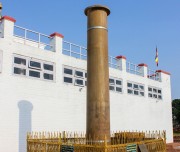
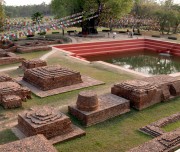
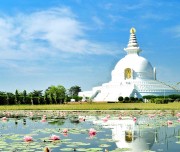


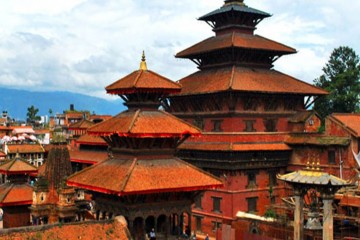
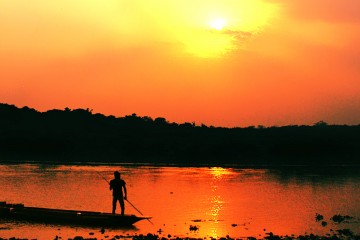
Tour Reviews
There are no reviews yet.
Leave a Review